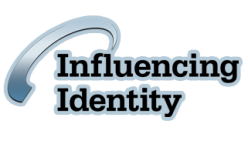You’ve chosen what name tag you want, designed your logo and made a list of the names you need printed on them. There’s still one crucial part of the name tag equation left: choosing a fastener. It’s not a decision that should be taken lightly, as different occasions and environments call for certain fasteners. Work attire and uniforms should be taken into consideration as well.
The fastener you choose will directly impact the appearance of the name tag, so choose carefully!
Magnet Fastener
Pros: Of all our fasteners, magnetic is the most popular. A strong magnetic current secures the name tag in place, but without snagging or pinning holes in the material.
Cons: If the name tag is hit or caught on something, it could be displaced and you might lose one side of the magnetic fastener.
Pin Fastener
Pros: Tried, tested and true, the pin fastener is simple and effective. Just pin it to your pocket or shirt, and your name tag will stay put. It won’t be dislodged unless the pin is accidentally unhooked, which is unlikely.
Cons: It might poke holes in your shirt or pocket. This isn’t a problem if your uniform or attire is made of heavy duty material, but if you’re wearing something more delicate, the pin might snag it.
Swivel Bulldog Clip
Pros: This fastener easily clips onto pockets and lanyards, securing your name tag without having to pin it through a shirt or fixate the magnets to stay put.
Cons: If you’re not wearing a lanyard, a jacket or pants with pockets then you’re out of luck. You want to avoid placing the name tag in an awkward place.
Bull Dog Clip with Pin
Pros: This fastener combines the best of both worlds. This can be clipped onto a sturdy pocket, lanyard, or onto your shirt. This particular clip ensures that your name tag will be wearable in every occasion, and with every outfit or ensemble.
Cons: There aren’t many cons with this fastener. But as with the regular pin fastener, the pin clip option of this fastener can make holes in your shirt or jacket.
Double Clutch Fastener
Pros: Two pins are better than one. Double clutch pins stabilize the name tag, preventing it from getting bent or hanging on the shirt too much. With even support on both sides, the name tag won’t flop or droop.
Cons: Like the regular pin clip fastener, double clutch fasteners can snag or create holes in the material it’s pinned on.
